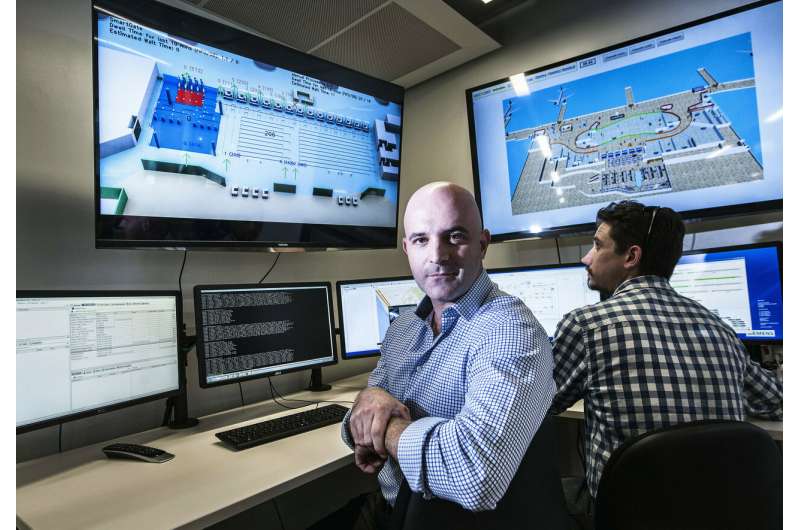Data analytics for safer air space

Imagine being able to predict an inexperienced pilot's erratic flight path in real time.
QUT researchers have harnessed data analytics to build an algorithm that can predict the trajectory of any object faster and more accurately than existing approaches.
"If it's got a trajectory, we can predict it," said Professor Clinton Fookes, who leads QUT's Vision and Signal Processing research discipline in the Science and Engineering Faculty. "In a Defence environment, this tool could help provide greater situational awareness of both owned and enemy assets and airspace.
"It could be applied to airspace, military bases, public transport or shopping centres – anywhere you want to analyse movement."
The unique algorithm combines two machine learning techniques to analyse and predict trajectories in real-time – deep neural networks and memory networks.
"In essence, it's built to measure a trajectory in and predict a trajectory out," Professor Fookes said.
"But as it's taking in the trajectory of the target object, it's also taking in the trajectories of neighbouring objects to create an awareness of what's around the target and how those objects are moving".
"In addition, it draws on memory networks of stored historical trajectories for the same location – these attempt to emulate how the human memory works".
"Those two sets of data are then analysed by another subnetwork that determines where the target will go next."
To ensure robustness, researchers trained the algorithm using disparate big data sets, including air traffic control data from Brisbane Airport, radar and camera data from pedestrian traffic at QUT and pedestrian trajectory databases from Edinburgh and New York.
"It can crunch about 1000 predictions in a couple of seconds," said Dr. Simon Denman, another project Chief Investigator.
"Using Brisbane Airport data from a 2015 severe weather event, we were able to test how well our algorithm coped in such a dynamic situation".
"Its predictions were very accurate because it factored how previous pilots behaved in similar conditions to predict what the target pilot is likely to do next".
"In civilian airspace, this algorithm could help manage drones, where we could see, potentially, an increasingly crowded and constrained airspace."
The team is hoping to extend the project in the future to investigate how the algorithm could be used to optimise flight paths and travel routes.
Provided by Queensland University of Technology





















